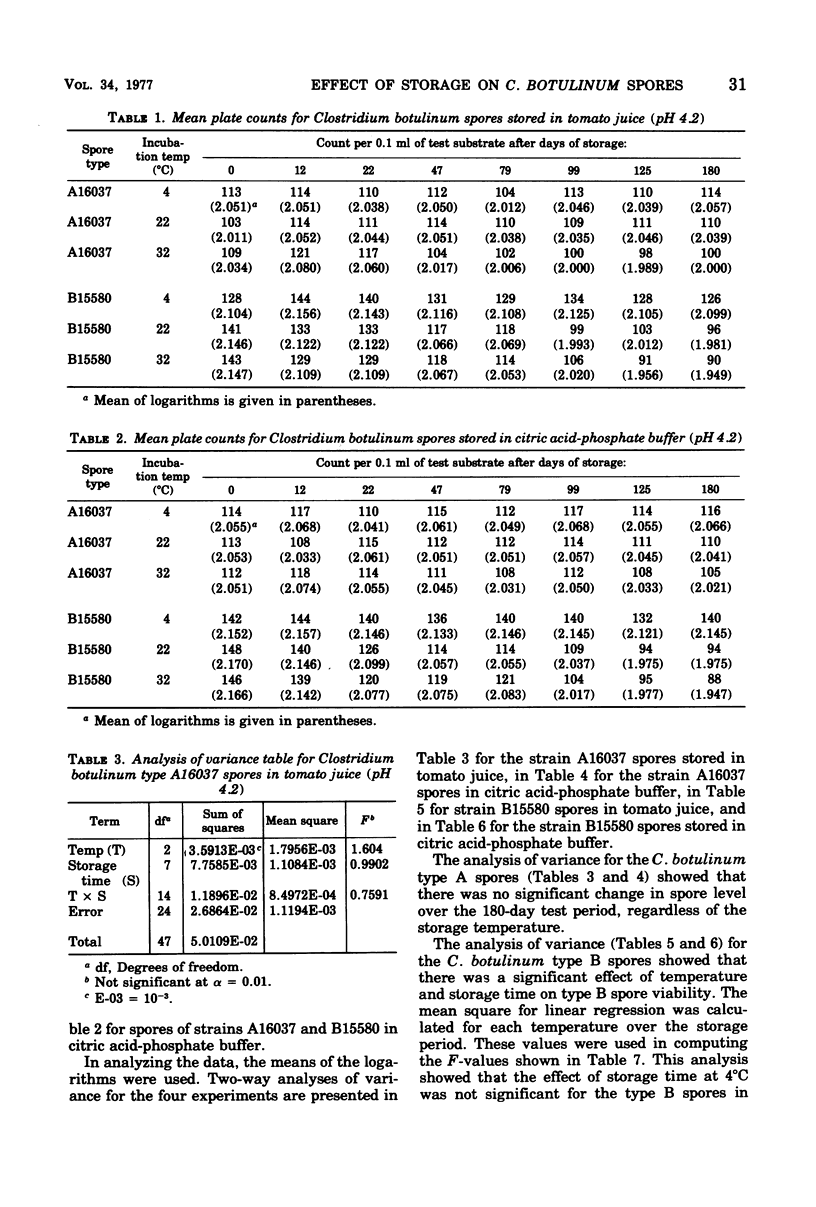Abstract
Clostridium-botulinum type A and type B spores were stored in tomato juice (pH 4.2) and citric acid-phosphate buffer (pH 4.2) at 4, 22, and 32 degrees C for 180 days. The spore count was determined at different intervals over the 180-day storage period. There was no significant decrease in the number of type A spores in either the tomato juice or citric acid-phosphate buffer stored for 180 days at 4, 22, and 32 degrees C. The number of type B spores did not decrease when storage was at 4 degrees C, but there was an approximately 30% decrease in the number of spores after 180 days of storage at 22 and 32 degrees C.
Full text
PDF



Selected References
These references are in PubMed. This may not be the complete list of references from this article.
- Huhtanen C. N., Naghski J., Custer C. S., Russell R. W. Growth and toxin production by Clostridium botulinum in moldy tomato juice. Appl Environ Microbiol. 1976 Nov;32(5):711–715. doi: 10.1128/aem.32.5.711-715.1976. [DOI] [PMC free article] [PubMed] [Google Scholar]
- Ito K. A., Chen J. K., Lerke P. A., Seeger M. L., Unverferth J. A. Effect of acid and salt concentration in fresh-pack pickles on the growth of Clostridium botulinum spores. Appl Environ Microbiol. 1976 Jul;32(1):121–124. doi: 10.1128/aem.32.1.121-124.1976. [DOI] [PMC free article] [PubMed] [Google Scholar]
- Odlaug T. E., Pflug I. J. Thermal destruction of Clostridium botulinum spores suspended in tomato juice in aluminum thermal death time tubes. Appl Environ Microbiol. 1977 Jul;34(1):23–29. doi: 10.1128/aem.34.1.23-29.1977. [DOI] [PMC free article] [PubMed] [Google Scholar]
- Pickett J., Berg B., Chaplin E., Brunstetter-Shafer M. A. Syndrome of botulism in infancy: clinical and electrophysiologic study. N Engl J Med. 1976 Sep 30;295(14):770–772. doi: 10.1056/NEJM197609302951407. [DOI] [PubMed] [Google Scholar]


